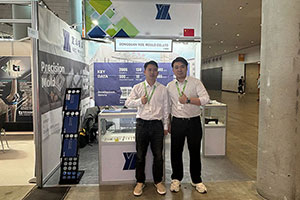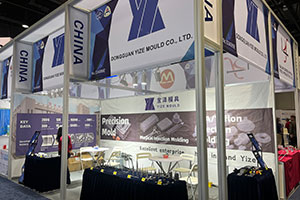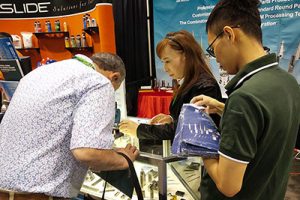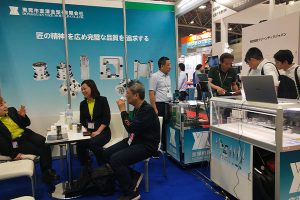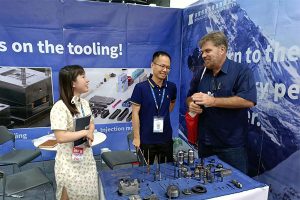Comprehensive Guide to Tungsten Carbide Wire EDM Processing
Tungsten carbide, renowned for its ultra-high hardness (HRA ≥89), compressive strength (4,000–6,000 MPa), and exceptional wear resistance, dominates critical industries such as mold manufacturing, aerospace components, and precision tooling. However, […]
Tungsten carbide, renowned for its ultra-high hardness (HRA ≥89), compressive strength (4,000–6,000 MPa), and exceptional wear resistance, dominates critical industries such as mold manufacturing, aerospace components, and precision tooling. However, its diamond-like hardness (approaching HRA 90) renders conventional machining methods prone to tool wear or breakage. Wire Electrical Discharge Machining (WEDM) has emerged as the cornerstone technology for tungsten carbide precision processing due to its non-contact erosion principle. This article systematically dissects the WEDM process for tungsten carbide, structured as pre-processing, execution, risk control, and post-processing, to unlock high-quality part manufacturing.
I. Pre-Processing: Laying the Foundation for Precision
- Material Selection & Preparation
- Material Grade: Prioritize YG-series tungsten carbides (e.g., YG8 with 6–12% cobalt content) for optimal toughness-to-brittleness balance.
- Surface Cleaning: Employ ultrasonic cleaning with neutral degreasers to eliminate oil contaminants (residual grease causes abnormal discharges). Validate dimensional accuracy using a CMM (tolerance ≤±0.01mm).
- Machine & Parameter Configuration
- Machine Selection: Use slow-traverse WEDM machines (e.g., AgieCharmilles CUT 3000) with precision linear guides (straightness ≤0.003mm/300mm) for ±0.002mm positioning accuracy.
- Parameter Optimization: Dynamically adjust parameters based on material thickness (20mm example):
- Electrode Wire: Φ0.1mm brass wire (tensile strength ≥1,200N/mm²)
- Discharge Parameters: Peak current 3–5A, pulse-on time 1–3μs, pulse-off time 10–15μs
- Dielectric Fluid: Specialized kerosene-based working fluid (conductivity 5–15μS/cm)
- Workholding & Calibration
- Fixture Design: Composite clamping with vacuum suction + lateral support to minimize deformation (≤0.005mm).
- Coordinate Alignment: Laser-based tool setting ensures workpiece-to-machine coordinate error ≤±0.003mm.
II. Execution: Five-Step Precision Machining
- 3D Modeling & Programming
- Use CAM software (Mastercam/GibbsCAM) for 3D modeling, emphasizing sharp corner transitions (radius ≥R0.1mm) and thin-wall structures (thickness ≥0.3mm).
- ISO Code Generation: Apply overcut compensation (0.01–0.02mm) to mitigate residual stress effects.
- Trial Cut Verification
- Conduct a 5×5mm pilot hole cut at the material edge. Adjust compensation values if deviation exceeds ±0.005mm.
- Segmented Cutting Strategy
- Roughing: High current (8–10A) for rapid material removal, leaving 0.15–0.2mm finishing allowance.
- Finishing: Low current (2–3A) + high-frequency pulses (1μs pulse-on time) with servo tracking for 0.001mm path control.
- Real-Time Monitoring & Intervention
- Spectroscopic Analysis: Monitor metal ion concentration in dielectric fluid; replace when tungsten exceeds 150ppm.
- Thermal Imaging: Use infrared cameras to maintain cutting zone temperature ≤80°C, preventing heat-affected zone expansion.
- Final Quality Inspection
- Dimensional Accuracy: Validate critical dimensions (e.g., H7/g6 fits) using a CMM.
- Surface Quality: Measure Ra value (target ≤0.8μm) with a profilometer; assess heat-affected zone hardness drop (≤5%) via microhardness testing.
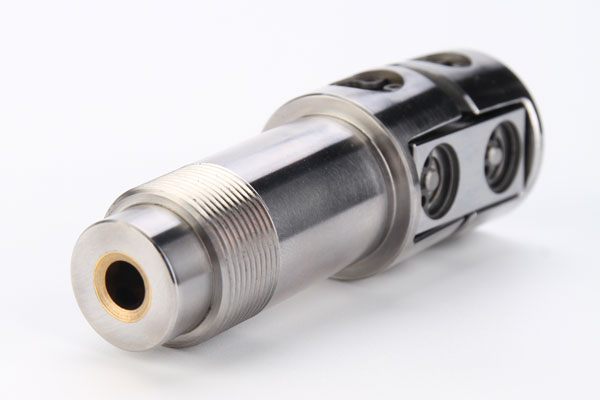
III. Risk Control: Four Critical Precautions
- Safety Protocols
- Operators must wear arc-resistant face shields (filter class ≥9), insulated gloves, and cut-resistant clothing.
- Machines shall be equipped with dual-circuit emergency stops and residual current devices (RCDs, ≤30mA trip current).
- Equipment Maintenance
- Daily: Clean conductive block oxidation; check wire tension stability (±0.5N fluctuation).
- Monthly: Replace ion-exchange resins (when conductivity exceeds limits); recalibrate servo encoders.
- Quality Traceability
- Log batch-specific parameters (cutting fluid changes, wire consumption) and apply Statistical Process Control (SPC) to identify process variations.
IV. Post-Processing: The Final Touch for Enhanced Performance
- Surface Enhancement
- Stress Relief Annealing: Vacuum furnace treatment at 500°C for 2 hours to reduce residual stresses (≥70% reduction).
- PVD Coating: Deposit TiAlN layers (2–3μm) for HV ≥3,200 hardness and ≥1,000h NSS corrosion resistance.
- Precision Verification
- CT Scanning: Industrial CT for internal crack detection (≤0.01mm resolution).
- White Light Interferometry: Micro-topography analysis (0.1μm step size).
- Packaging & Storage
- Vacuum packaging with desiccants; store in climate-controlled warehouses (20±2°C, ≤40%RH).
Conclusion: Technological Evolution Driving Industrial Advancement
With advancements like 5-axis WEDM machines (e.g., GF Machining Solutions CUT P Series) and AI-driven parameter optimization, tungsten carbide WEDM now achieves 40% faster processing, Ra 0.2μm surface finishes, and ≥95% material utilization rates. As a 15-year tungsten carbide processing specialist, Dongguan Yize Mould offers integrated solutions spanning material selection, process engineering, and equipment integration. Our core products include tungsten carbide punches, die inserts, and custom hard alloy components.
Our factory business: carbide parts, mold parts, medical injection molds, precision injection molds, teflon PFA injection molding, PFA tube fittings. email: [email protected],whatsapp:+8613302615729.
Contact Us:
📞 Hotline: +86 133 0261 5729 (WeChat/WhatsApp)
🌐 Website: www.yizemould.com
📍 Address: Zhen’an Industrial Zone, Chang’an Town, Dongguan City, Guangdong Province, China


